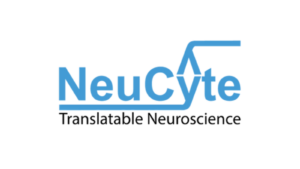
Application Note with NeuCyte
The application note is a collaboration between NeuCyte and MaxWell Biosystems highlighting the findings from SynFire iNs cultured on MaxTwo 6-Well Plates across multiple recording days over two months.
The SynFire iNs developed and maintained mature neuronal network activity. Together, the assessment of SynFire iNs on the MaxTwo Multi-Well HD-MEA System is shown to be a valuable assay for phenotypic screening, disease modeling and drug discovery.
Title
Long-term functional characterization of SynFire® iNs and astrocytes co-cultured on MaxTwo multi-well high-density microelectrode arrays
Abstract
The brain is a complex system composed of multiple cell types working synergistically to develop stable network activity. Progress in understanding complex network electrophysiology phenotypes as well as how they are altered in disease states has been facilitated by the development of neuron-astrocyte co-cultures. Complementary to neurons, astrocytes provide support for neuronal outgrowth and are essential for synapse formation and stabilization. To best utilize neuron-astrocyte co-cultures for phenotypic assessment, it is imperative to understand their developmental trajectory, which will enable optimized sampling windows for assay development.
NeuCyte manufactures highly pure, ready-to-use human induced pluripotent stem cells (iPSC)- induced Glutamatergic and GABAergic neurons, the SynFire® iNs (induced neurons). SynFire iNs are generated using a patented procedure for direct reprogramming and exhibit many salient characteristics of human neurons, such as expression of typical pan-neuronal markers and complex electrophysiology, including spontaneous and evoked action potentials and synchronized network activity. These human iPSC-derived neurons are valuable because of a lack of a natural source of human neurons for use in research. These neurons are an essential tool for in vitro disease modeling, compound efficacy assessment, and drug discovery. These human neurons can also be used for preclinical safety assessment and chemical neurotoxicity evaluation.
To functionally characterize the SynFire iNs, the MaxWell Biosystems MaxTwo Multi-Well High- Density Microelectrode Array (HD-MEA) platform offers high quality and high-resolution functional readouts of electrical activity and network dynamics. With 26,400 electrodes (at a density greater than 3,150 electrodes per mm2) in every well3, MaxTwo Multi-Well HD-MEA System allows for simultaneous electrophysiological recordings across six wells in an automated and non-invasive manner. These features ensure that the biologically relevant electrical activity is recorded across virtually all cells on the HD-MEA surface, from network to sub-cellular levels. Complemented with a user-friendly graphical interface of the MaxLab Live software, the MaxTwo Multi-Well HD-MEA System extracts meaningful metrics related to neuronal and network maturation as well as axonal morphology and characteristics.
The work presented summarizes the findings from SynFire iNs cultured on MaxTwo 6-Well Plates across multiple recording days over two months. The SynFire iNs developed and maintained mature neuronal network activity. Moreover, these mature networks were sensitive to and potentiated by chemical treatments. Together, the assessment of SynFire iNs on the MaxTwo Multi-Well HD-MEA System is shown to be a valuable assay for phenotypic screening, disease modeling and drug discovery.
Please complete the form below:
 English
English


